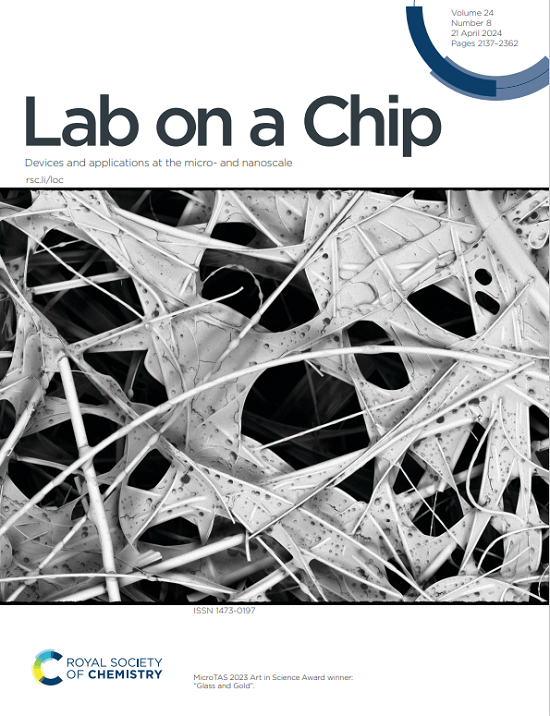微流控器件中智能功能材料作动器的现状与未来
IF 5.4
2区 工程技术
Q1 BIOCHEMICAL RESEARCH METHODS
引用次数: 0
摘要
执行器在微流体系统中的作用是精确测量和分析的基础,因为它们可以通过将各种形式的能量(包括电,热,压电和电磁)转换为机械运动来精确控制流体流动。微流控装置内执行器的集成促进了系统的小型化,允许在微尺度上进行复杂的流体操作。执行器是微泵,微混合器,微阀和其他流体控制元件的重要组成部分,确保精确处理非常少量的液体。然而,执行器材料类型的选择高度依赖于具体应用,以及将其集成在其中的微流控装置的材料组成和结构配置。执行器可以具有移动或静态组件,混合材料的使用允许开发创新的执行机构。考虑到可能的致动器-材料组合的广泛范围,选择合适的致动策略对于优化设备性能至关重要。本文综述了微流体驱动的最新进展,特别强调了材料的创新。它探讨了集成在微流体通道中的新兴致动器材料,它们的制造和集成方法,激活机制和功能应用。此外,本文还对微流控作动器材料的发展前景进行了展望。本文章由计算机程序翻译,如有差异,请以英文原文为准。
Present and Future of Smart Functional Materials as Actuators in Microfluidic Devices
The role of actuators in microfluidic systems is fundamental for accurate measurements and analyses, as they enable precise control over fluid flow by converting various forms of energy—including electrical, thermal, piezoelectric, and electromagnetic—into mechanical motion. The integration of actuators within microfluidic devices facilitates system miniaturization, allowing complex fluidic operations at the microscale. Actuators are essential components in micropumps, micromixers, microvalves, and other fluidic control elements, ensuring accurate handling of very small quantities of liquids. However, the selection of the material type for the actuator is highly dependent on the specific application, as well as on the material composition and structural configuration of the microfluidic device in which it will be integrated. Actuators can feature either moving or static components, and the use of hybrid materials allows for the development of innovative actuation mechanisms. Given the vast range of possible actuator-material combinations, selecting an appropriate actuation strategy is critical for optimal device performance. This review presents recent advancements in microfluidic actuation, with a particular emphasis on material innovations. It explores emerging actuator materials integrated within microfluidic channels, their fabrication and integration methods, activation mechanisms, and functional applications. Additionally, the review provides a comprehensive outlook on promising materials for future microfluidic actuator development.
求助全文
通过发布文献求助,成功后即可免费获取论文全文。
去求助
来源期刊

Lab on a Chip
工程技术-化学综合
CiteScore
11.10
自引率
8.20%
发文量
434
审稿时长
2.6 months
期刊介绍:
Lab on a Chip is the premiere journal that publishes cutting-edge research in the field of miniaturization. By their very nature, microfluidic/nanofluidic/miniaturized systems are at the intersection of disciplines, spanning fundamental research to high-end application, which is reflected by the broad readership of the journal. Lab on a Chip publishes two types of papers on original research: full-length research papers and communications. Papers should demonstrate innovations, which can come from technical advancements or applications addressing pressing needs in globally important areas. The journal also publishes Comments, Reviews, and Perspectives.
 求助内容:
求助内容: 应助结果提醒方式:
应助结果提醒方式:


